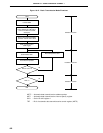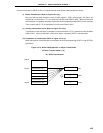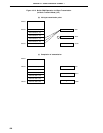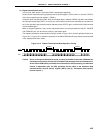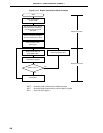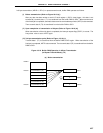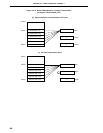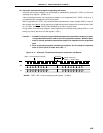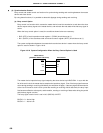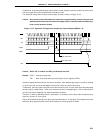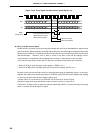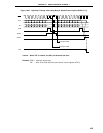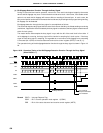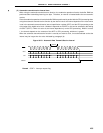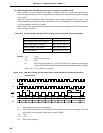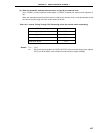
430
CHAPTER 18 SERIAL INTERFACE CHANNEL 1
(4) Synchronization Control
Busy control and strobe control are functions for synchronizing sending and receiving between the master
device and slave device.
By using these functions, it is possible to detect bit slippage during sending and receiving.
(a) Busy control Option
Busy control is a function which causes the master device’s serial transmission to wait when the slave
device outputs a busy signal to the master device, and maintain the wait state while that busy signal is
active.
When the busy control option is used, the conditions shown below are necessary.
• Bit 5 (ATE) of serial operation mode register 1 (CSIM1) should be set at (1).
• Bit 1 (BUSY1) of the auto data send and receive control register (ADTC) should be set at (1).
The system configuration between the master device and slave device in cases where the busy control
option is used is shown in Figure 18-18.
Figure 18-18. System Configuration When the Busy Control Option is Used
The master device inputs the busy signal output by the slave device to pin BUSY/P24. In sync with the
fall of the serial clock, the master device samples the input busy signal. Even if the busy signal becomes
active during sending or receiving of 8 bit data, the wait does not apply. If the busy signal becomes active
at the rise of the serial clock 2 clock cycles after sending or receiving of 8 bit data ends, the busy input
first becomes effective at that point, and thereafter, sending or receiving of data waits during the period
that the busy signal is active.
The busy signal’s active level is set in bit 0 (BUSY0) of ADTC.
BUSY0 = 0: Active High
BUSY0 = 1: Active Low
SCK1
SO1
SI1
SCK1
SO1
SI1
BUSY
Master Device
(µPD78054, 78054Y Sub-series) Slave Device



